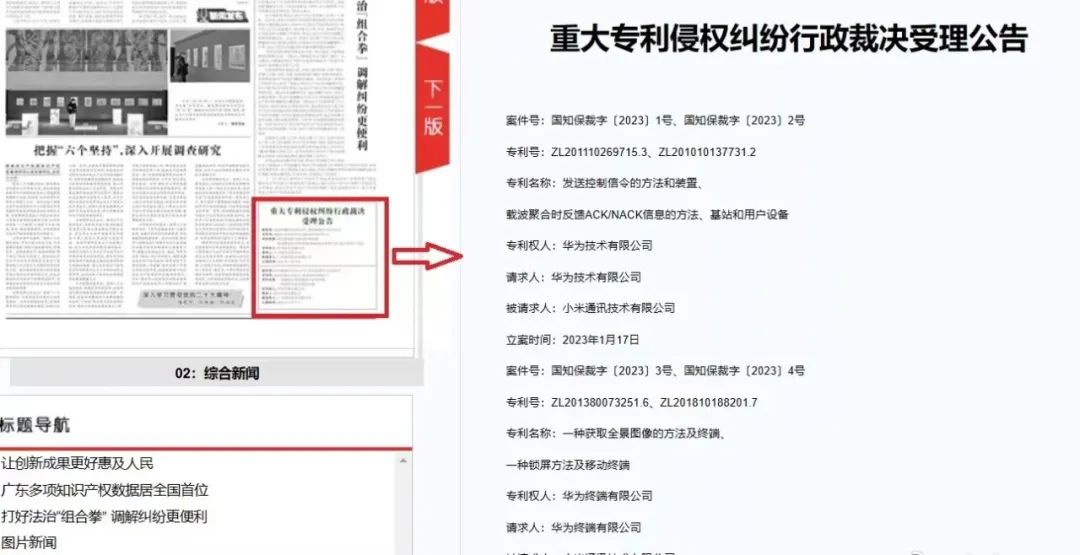Huawei has sued Xiaomi for four patent infringements, according to the Announcement of Acceptance of Administrative Rulings on Major Patent Infringement Disputes published in the 02 edition of the National Intellectual Property News.

According to Yinpersimmon Finance, Xiaomi responded that the two sides are in active negotiations over patent licensing; China’s intellectual property protection system provides a plurality of settlement mechanisms, including administrative and judicial mediation. It is industry practice to resolve licensing issues through third-party mediation mechanisms, and both Huawei and Xiaomi believe that IP licensing and cooperation is conducive to promoting innovation and the public interest, and that mediation is an effective channel to help achieve licensing. While continuing to actively negotiate, the two sides are seeking to utilize a diverse range of mediation mechanisms to help them reach an agreement.
According to the Announcement of Acceptance of Administrative Decision on Major Patent Infringement Disputes, on January 17, 2023, the State Intellectual Property Office accepted the case of infringement of four Chinese patents by Xiaomi, which was proposed by the requestor Huawei. From the contents disclosed in the case, the four patents involved in the dispute are respectively “method and device for sending control signaling”. “A Method of feedback ACK/NACK information during carrier aggregation, base Station and user device”, “A method of obtaining panoramic image and terminal”, “a method of lock screen and mobile terminal”. In terms of patent content, cases 1 and 2 relate to 4G/LTE technology, which is a standard essential patent SEP. Cases 3 and 4 involve cellphone photography and unlocking technology that is not a SEP patent.
Read Also: ILIFE L100 Robot Vacuum Cleaner: Design, and Features Review
igeekphone noted that at the opening of the World Design Capital 2022 conference last year, Huawei managing director and Terminal BG CEO Richard Yu made a joke about patent infringement. “In many industries, especially in China, they copy our designs,” he said. Including some of our patents, people use them without paying us royalties, and then claim them as their own patents, and even copy some things.”










